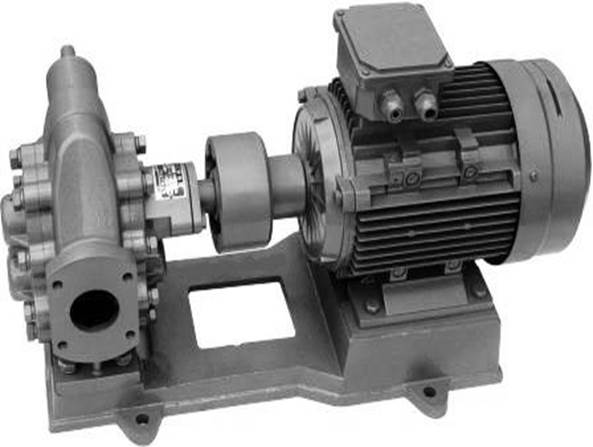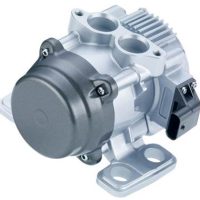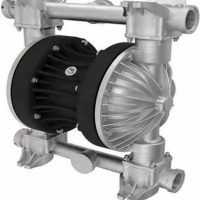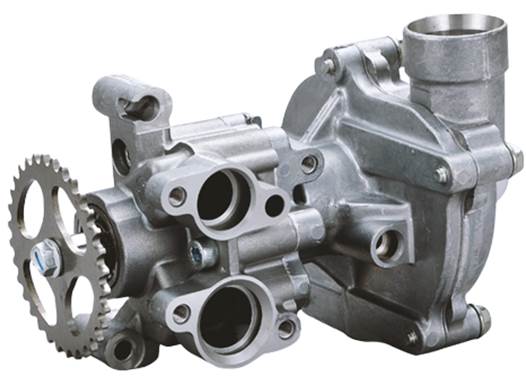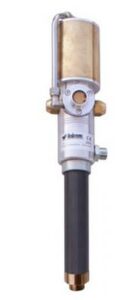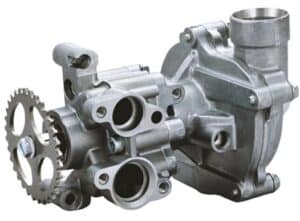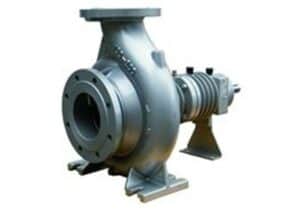Oil Pump
REQUEST A QUOTE FOR MORE DETAILS
What is an oil pump?
This is a seal-less pump that employs magnets to drive pump impeller to create pressure energy needed to transport the liquid. There are two magnets in this pump. The two magnets are arranged opposite to each other creating a magnetic field pattern. This pattern forces the drive magnet to rotate the driven magnet when the motor shaft rotates. This type of pump is very good in transporting hazardous and corrosive fluids which when leaked could lead to legal action or cause a high level of damage like fire. As such, magnetic pump manufacturers are constrained to follow strict regulations when designing this pump to ensure it will be free from any leakage when transporting hazardous fluids. The pump works by rotating its impeller to create a pressure difference between the inside of the pump and the sump. This pressure difference forces fluid into the pump. The pump then transports the fluid using pressure energy to the indented location.
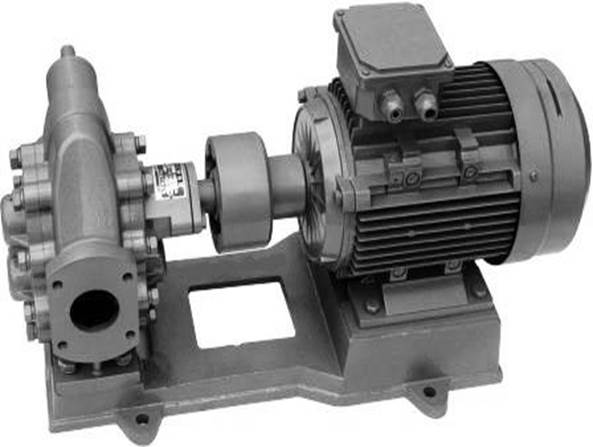
How does an oil pump work?
The working of an oil pump depends on the particular category of positive displacement pumps to which the device belongs. Positives displacement pumps have two major types: rotary and reciprocating pumps. Rotary positive displacement pumps utilize the actions of rotating gears, lobes, or vanes to move fluids instead of the forward and backward movement of reciprocating pumps. As the rotating element turns, it develops a liquid seal within the pump casing and creates suction at the pump inlet. Consequently, fluid is drawn into the pump, enclosed within the teeth of its rotating gears or lobes, and transferred from the inlet to the discharge side, around the inner side of the pump casing. As the gears or lobes interlock on the discharge side of the pump, they reduce the volume and force the fluid out under pressure. The gear oil pump is the simplest example of a rotary positive displacement pump.
On the other hand, reciprocating positive displacement pumps work by the repeated back-and-forth movement of a piston, plunger, or diaphragm (also called a flexible membrane). The cyclic motion of such components compresses and forces fluid through the pumping system. Because of their repeated and predictable pumping action, reciprocating oil pumps are perfect for applications requiring accurate metering and dosing, such as fertilizer and chemical industries.
Types of the oil pump
Electric gear oil pump
An electric gear oil pump is a positive displacement (PD) rotary pump that uses an electric motor as the prime mover. It consists of a set of interlocking gears which act as the rotating element to displace fluid through the pump. The electric gear oil repeatedly encloses a fixed volume of oil between the gear teeth and moves it mechanically using a cyclic pumping action. It is particularly suited for pumping oils and other high-viscosity fluids and is found in hydraulic power systems and commercial and household lighting equipment. Oil pump manufacturers avail the electric gear oil pumps in either external or internal gear configurations. The electric external gear oil pump has two interlocking spur or herringbone gears, while the external gear oil pump has one internal gear and a spur gear rotating inside it in the same direction. These pumps have unique advantages over each other. For instance, the external gear oil pump can sustain higher pressure and flow rates than the internal gear counterpart. On the other hand, the internal oil gear pump provides better suction capabilities.

Pneumatic oil pump
A pneumatic oil pump uses compressed air to create a mechanical effect that helps control and move oil through pipelines. It generates an amplified mechanical force by pressuring air or inert gases, which translates into a high-power source. The Pneumatic oil pump is ideal for transferring low-viscosity fluids, including motor oil, old waste oil, antifreeze, transmission oil, ATF oil, and other liquids with similar properties. Manufacturers configure the pneumatic oil pump for either wall-mounting or placing directly on the drum or tank.
Figure: Showing the configuration of a pneumatic oil pump.
Self-priming oil pump
A self-priming oil pump also uses gear or lobes to circulate oil under pressure to transfer oil, but it is constructed to hold the necessary volume of oil inside the cavity or pump body to start the pumping process. The self-priming oil pump has many variations, such as a twin gear self-priming pump, rotor self-priming pump, and front cover self-priming pump. Because of the self-priming ability, self-priming oil pumps can better handle air pockets, providing excellent operating efficiency. Self-priming oil pumps are widely used in the automotive industry as engine oil pumps to lubricate engine components. They also suit frequent and intermittent pumping operations in oil refineries since they eliminate the manual priming stages.
Figure: Showing the configuration of a self-priming oil pump.
Thermal oil transfer pump
A thermal oil transfer pump is a particular type of centrifugal pump used for hot oil circulation and transfer. It mainly features a stainless-steel or cast-steel construction. A thermal oil transfer pump primarily applies in closed systems where hot oil is used to directly transfer heat without creating hot spots, which can damage the product through thermal cracking, thermal decomposition, or solidification. It suits many industrial systems, such as hot oil circulation, oil burners, furnaces, and boiler systems on board ships and vessels.
Figure: Showing the configuration of a thermal oil transfer pump.
Applications of oil pumps
Oil pumps suit various uses in many industries, such as automotive, chemical, petrochemical, soap, paper, oil and gas refineries, etc. They perfectly cater to hydraulic power systems in vehicles, lifting machinery, and mobile plant equipment. The following are typical uses of oil pumps.
- Oil pumps are used in internal combustion engines to supply lubricating oil, which prevents wear, and tear of engine components and help with cooling.
- They lubricate the automatic or continuously variable transmission, particularly when starting or stopping the vehicle.
- They are used to transfer crude oil and diesel in petrochemical industries.
- They pump high-viscosity fluids such as oil, paints, and resins.
- They are used to transfer oils, vegetable fat, and butter in food industries.
- They are used for accurate blending, metering, and dosing operations in chemical and agricultural applications.
- They are also perfect for transferring low-viscosity fluids, including motor oil, old waste oil, antifreeze, transmission oil, ATF oil, and other liquids with similar properties.
- Thermal oil transfer pumps are used to transfer hot oils to oil burners and to pump thermal oils at high temperatures without external cooling.
Advantages of the oil pump
- They are perfect for transferring high-viscosity oils up to 50,000 CP.
- They have excellent control of the output. Hence can be used as a metering or dosing pump.
- They have high reliability and durability. The elements of the oil pump are highly durable and robust.
- They have fewer repairs, less downtime, and a low life cycle cost.
- They are easy to operate, maintain, and reconstruct.
- They provide cavitation-free operation
- Oil pumps are lightweight, compact, and straightforward due to a few moving parts.
- They can overcome high-temperature conditions.
- They have high efficiency and low power consumption.
Disadvantages of the oil pump
- The oil pump cannot pump fluid with suspended solid particles.
- Oil pumps require precise manufacturing, which might be expensive.
- Oil pumps with gears or lobes pump against back pressure, and any blockage downstream can cause pipework failure or the equipment.
- The interlocking gears, lobes, or exiting air from pneumatic components can be loud.
Selecting oil pump
The selection f an oil pump is based on careful analysis of the following factors
Oil viscosity
The oil viscosity dictates the size and speed of the oil pump. Thin oils require a high-speed pump, while highly viscous oils require a low-speed-high torque pumps.
The elevation of the oil reservoir
If the oil pump has to deliver oil to a higher elevation tank through a one-inch diameter pipe that climbs several feet, then the pump should be capable of handling the weight of the oil column.
Required flow rates
It would help if you determined the liters per minute needed for a particular application. The oil pump should be able to meet that flow rate for smooth operation.
Desired fluid pressure
The oil pump should generate the desired output pressure for effective operation. However, it should not exceed the maximum pressure for the application because it can wear the plumbing system.
Troubleshooting oil pump
The motor fails to start
- The power cable is broken. Consult a licensed electrical technician to inspect and replace any broken wires.
- The power supply to the Control Panel is inadequate. Check the power supply and ensure the power cable connections follows the oil pump manufacturer’s guidelines.
- The fuse is blown-out, or the circuit breaker is tripping. Inspect the pump for a blown-out fuse and replace it if necessary. Be sure to reset the circuit breaker if necessary.
The pump gives zero discharge
- There is an air pocket in the suction line. Fill the suction line with fluid and slope the pipework upwards. Ensure pipework is as straight and free of kinks.
- The suction tube is cracked. Inspect and repair or replace the suction tube with another one from the pneumatic oil pump manufacturer.
- The pump is not primed and thus cannot pick up any product. Perform the priming cycle to purge out ant trapped air from the system and allow the pump to generate line pressure and stall.
- The relief valve has failed. Inspect and clean or replace the relief valve.
- The suction line is blocked. Check and remove the blockage.
The pump is unable to self-prime
- The motor direction is wrong/reversed. Inspect the motor rotation direction and switch the polarities if it is necessary. Ensure motor rotation matches the direction of the arrow provided on the nameplate by the oil pump manufacturer.
- The lift is too high for the pump speed. Make sure you understand the suction lift requirements before selecting your pump.
- The pump is air bound. Open the valve in the air release line.
The pump is noisy
- The pump is cavitating. Use pipes of the correct diameter following the oil pump manufacturer. Reduce the suction head and clean filters. Also, try reducing the pump speed and raising the fluid level in the tank.
- Vibrations in safety valves. Adjust the pressure setting to the level recommended by the gear oil pump manufacturer or replace the safety valve if necessary.
The pump cycles slow
- The fluid viscosity is too high. Match the pump with the application requirement. Increase pump size, and increase pipe diameter.
- The delivery hose is blocked. Inspect and clean the delivery hose.
Summary
An oil pump is a mechanical device for circulating oil under pressure to the moving parts of an internal combustion engine. The oil pump constitutes the heart of the engine’s lubricating systems, which supplies engine oil to bearings, pistons, and camshaft, preventing wear and tear of the components and assisting in cooling down the engine. It is a positive displacement pump because oil pump manufacturers develop the unit to repeatedly enclose a fixed volume of fluid and move it mechanically through the pump. An oil pump can also be a rotary positive displacement pump (which utilizes gears, lobe, or vanes to move fluids) or a reciprocating positive displacement pump (which relies on repeated back-and-forth piston movement, plunger, or diaphragm). In addition, oil pumps can be electrically or pneumatically powered, depending on the pump type and application. Oil pumps suit various uses in many industries, such as automotive, chemical, petrochemical, soap, oil, and crude oil and gas refineries. They provide the outstanding benefits of high efficiency, low power consumption, fewer repairs, and less downtime.

